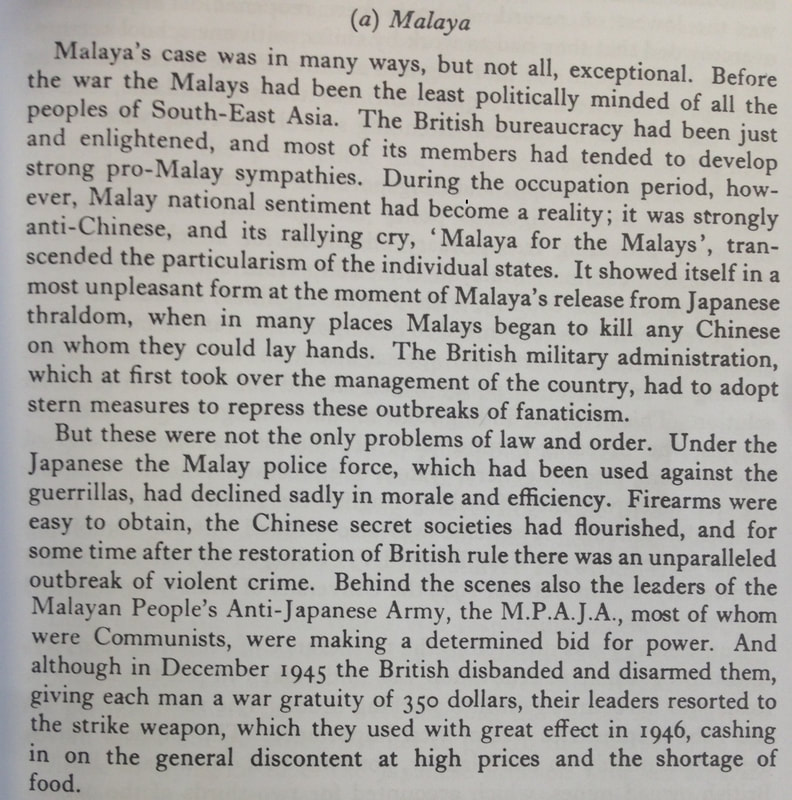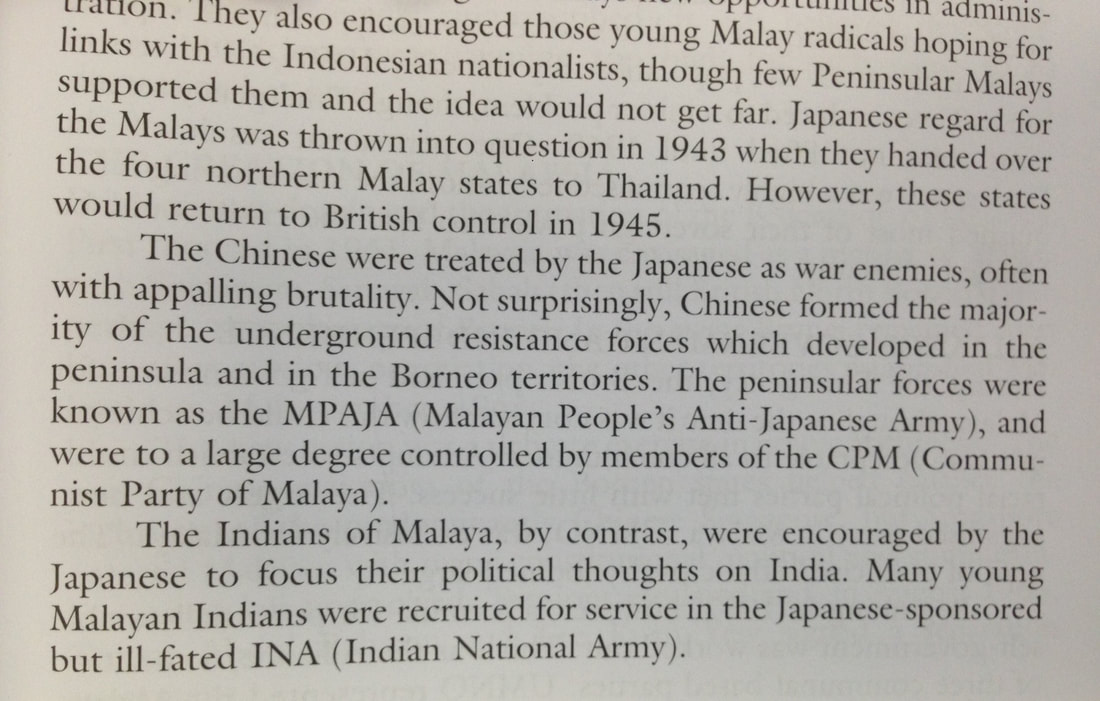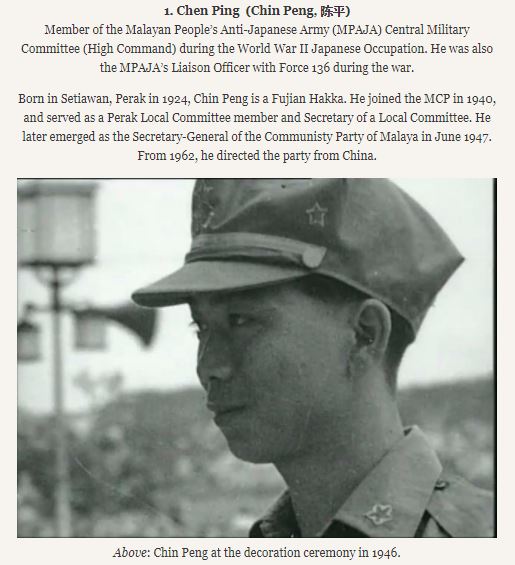Background to Malaysia and the Malaysian Communist Party (MCP)
Before the Japanese occupation in the Second World War, the British had used Malaysia for two major exports, tin and rubber. These accounted for nearly 85% of Malay's exports. During the period of occupation the Japanese bought "vile tyranny" (D.G.E. Hall 870) to the Malay peninsula.
Assess from the sources what issues were caused by the occupation and how they may have led to fighting between the Malaysian Communist Party (MCP) and the British.
Assess from the sources what issues were caused by the occupation and how they may have led to fighting between the Malaysian Communist Party (MCP) and the British.
|
Source One: D.G.E. Hall, A History of South-East Asia
Source 3: http://www.britishempire.co.uk/article/malayanemergency.htm
During the occupation by the Japanese bands of Chinese, led by a young Communist, Chin Peng, established deep jungle hide-outs from which to carry out harassing attacks on small Japanese units in the countryside. These were mainly small skirmishes and ambushes, followed by rapid retreat back into the jungle. The guerilla bands were named the Malayan Peoples Anti Japanese Army – MPAJA. At the same time a number of British military and administrative officers had also remained behind after the fall of Singapore to form a guerilla group to harass the Japanese. These officers eventually joined up with the Chinese guerillas and helped to train the Chinese guerillas in jungle warfare and guerilla tactics. Eventually contact was made with the British Far East Command HQ in Ceylon and a number of volunteers were parachuted into the jungle to join the British and Chinese guerillas. In addition, large drops of arms, ammunition and equipment were also made to strengthen the capability of the combined jungle forces, designated as Force 136. After the surrender of the Japanese in 1945 members of the MPAJA returned to civilian life in the Malayan community and surrendered their arms to the British forces. However, this was only a token surrender as they had buried most of the arms and ammunition in secret jungle locations, some still in the unopened canisters which had been parachuted to them during the war. Also a small secret underground organization remained in the jungle to form the nucleus for a post-war rebellion. |
Source Two: P Church, A Short History of South-East Asia
Source 4: Photograph of Chen Ping (Chin Peng) in 1946.
|
| malaya_emergency_causes_source_work.docx | |
| File Size: | 17 kb |
| File Type: | docx |
Now watch the first 21 minutes of the 1998 BBC documentary on the Malaya emergency. Consider how far the sources support the ideas in this documentary.
What were the causes of the Malaya Emergency?
With this background on the causes of the emergency and formation of the MCP, try and connect the causes together. Make your own version of these hexagons and connect the factors. Try to explain how each factor connects and consider which factors may have been more significant in the developing emergency.
| malaya_causes_hexagons.docx | |
| File Size: | 25 kb |
| File Type: | docx |
The course of the Emergency; British and Commonwealth responses and the nature of the conflict.
The conflict can be split into fours phases:
PHASE ONE: 1948 - 1950, State of emergency declared.
PHASE TWO: 1950 - 1952, The Briggs plan is enacted.
PHASE THREE: 1952 - 1954, Templer plan to win hearts and minds.
PHASE FOUR: 1954 - 60, Mopping up and the end of the emergency.
PHASE ONE: 1948 - 1950, State of emergency declared.
PHASE TWO: 1950 - 1952, The Briggs plan is enacted.
PHASE THREE: 1952 - 1954, Templer plan to win hearts and minds.
PHASE FOUR: 1954 - 60, Mopping up and the end of the emergency.
Using the pictures in the slideshow below as a stimulus, investigate what the actions of the British were in each of the phases. How did they approach the problem of the communist insurgency? How and why did their tactics change? Was the appointment of Templer the turning point?
Use the web links, second part of the BBC video to help guide you on the research. Complete the discovery and wonder sheet and add in pictures to help visualise each phase.
Use the web links, second part of the BBC video to help guide you on the research. Complete the discovery and wonder sheet and add in pictures to help visualise each phase.
| malaya_emergency_discovery_and_wonder.docx | |
| File Size: | 18 kb |
| File Type: | docx |
|
| ||||||||||||
| |||||||


